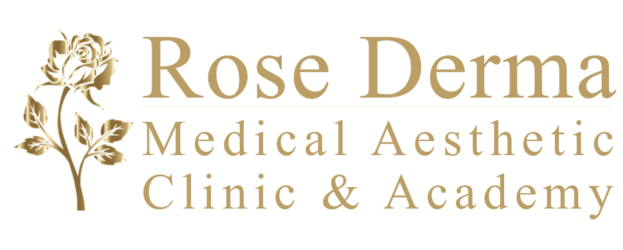Working Time
- – Monday-Friday 09:00 – 16:00
(After 16:00 Only with appointment)
– Saturday, Sunday With appointment
Contact Info
-
-
Tel: 1-514-243-4019
-
Ask the Experts
Microblading

Microblading is a semi-permanent cosmetic tattooing technique used primarily to enhance or reshape eyebrows. It involves the use of a fine, handheld blade to apply pigment into the skin, mimicking natural eyebrow hairs. The goal of microblading is to create fuller, more defined eyebrows by depositing pigment in the upper layers of the skin. It’s especially popular for people with sparse, uneven, or thinning eyebrows who want to achieve a natural-looking, well-groomed appearance without the need for daily makeup application.
How Microblading Works:
- Consultation:
- Before the procedure, a consultation is done to assess the client’s natural eyebrow shape, facial features, and preferences. The technician will work with the client to design the desired shape and choose a pigment color that matches their natural brow or hair color.
- Designing the Brows:
- The technician outlines the shape of the new eyebrows using a pencil. This is an essential step to ensure symmetry and that the brows complement the client’s facial features. The client has the opportunity to review and approve the design before proceeding.
- Pigment Application:
- Using a specialized tool, often consisting of a series of tiny needles in the form of a blade, the technician makes precise, hair-like strokes in the skin. The pigment is then deposited into the shallow layers of the skin to mimic the natural look of eyebrow hairs.
- Healing Process:
- After the procedure, the skin will naturally scab over and heal, with the pigment settling into the skin over a few weeks. Healing time typically takes around 7-14 days, but full color retention can take up to 4-6 weeks.
- Touch-ups:
- A follow-up touch-up session is usually required 4-6 weeks after the initial treatment to ensure the pigment has healed correctly and to make any necessary adjustments to color, shape, or density. Over time, the pigment will fade, and clients may require touch-ups every 1-3 years, depending on individual skin types and lifestyle.
Benefits of Microblading:
- Natural-Looking Results:
- One of the biggest advantages of microblading is its ability to create highly realistic, natural-looking eyebrows. The strokes made during the procedure mimic individual hairs, so the result is soft and subtle rather than harsh or overly defined.
- Saves Time:
- Microblading eliminates the need to fill in or shape your eyebrows every day with makeup. It’s a great time-saver for people who have busy routines or struggle to achieve a symmetrical or defined brow shape.
- Long-Lasting:
- While microblading is not permanent, the results typically last between 12-18 months before the pigment begins to fade. Touch-up sessions can help maintain the look.
- Customizable:
- Microblading is highly customizable to suit individual preferences. The technician can adjust the shape, thickness, and color to create eyebrows that complement your face and enhance your natural features.
- Less Maintenance:
- After the initial healing process, microblading requires very little maintenance compared to other eyebrow solutions like penciling or waxing. It’s resistant to sweat, water, and smudging.
Who is an Ideal Candidate for Microblading?
- Sparse or Thin Eyebrows: Individuals with naturally thin or sparse eyebrows can benefit greatly from the procedure, as it adds volume and creates a fuller look.
- People with Alopecia or Hair Loss: Those who have lost eyebrow hair due to conditions like alopecia or chemotherapy often turn to microblading as a way to restore their eyebrows.
- Busy Lifestyles: People looking to save time on daily makeup routines or who want a consistent brow shape throughout the day without worrying about smudging or fading.
- Those with Uneven Brows: If one eyebrow is significantly different from the other, microblading can help create symmetry and balance between the two.
- Those Seeking a Natural Look: Microblading is ideal for people who want a natural, less “made-up” look compared to other eyebrow tattooing techniques, which tend to be more dramatic.
Risks and Considerations:
- Infection: As with any procedure involving the skin, there’s a risk of infection if proper aftercare is not followed. It’s important to avoid touching or scratching the eyebrows during the healing process.
- Allergic Reactions: While rare, some individuals may experience an allergic reaction to the pigment used in microblading. It’s important to do a patch test before the procedure to check for any sensitivities.
- Uneven Healing: In some cases, the pigment may heal unevenly, resulting in areas that are lighter or have faded faster than others.
- Not Suitable for Oily Skin: People with oily skin may experience faster fading of the pigment, as oil can cause the ink to blur and fade more quickly.
- Pregnancy or Health Conditions: Pregnant women, people with certain skin conditions (such as eczema or psoriasis), or individuals with active infections may not be suitable candidates for microblading.
Aftercare Tips:
- Avoid Getting Brows Wet: During the initial healing period, keep your brows dry to prevent infection and fading.
- No Scratching or Picking: Let the scabs fall off naturally to avoid disrupting the healing process.
- Apply Healing Ointment: Your technician may recommend a special ointment or balm to apply to the eyebrows during healing to prevent dryness and promote healing.
- Avoid Direct Sun Exposure: Protect your new brows from the sun to prevent premature fading.
- Be Gentle: Avoid using harsh skincare products like retinols or exfoliants on the brow area during the healing process.
